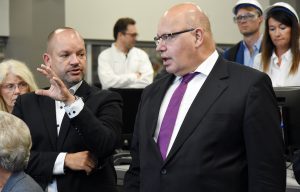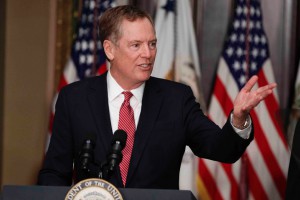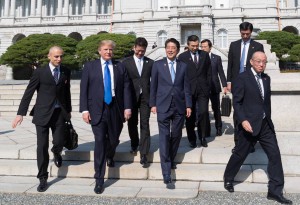While U.S. trade negotiators continue to toil with talks in China and Europe, there appears to be a small breakthrough coming with Japan that will likely benefit the auto industry.
The two sides are working on a trade deal centered on U.S. farmers and Japanese automakers, according to a report by Reuters. All of the components could be in place by the time President Donald Trump and Prime Minister Shinzo Abe in the U.S. in September.
The deal calls for Japan to provide U.S. farmers with new access to its market in return for Washington reducing tariffs on certain Japanese auto parts. In terms of the farmers, the access would focus on beef and pork, but nothing is settled and it could change, according to the report.
If the sides agree, it’s a win-win for leaders of both countries. Abe gains favor with automakers and suppliers while Trump can perhaps gain support with farmers. U.S. farmers were strong supporters of Trump during his run for office, but the wrestling match with the Chinese has soured that support as farmers are seeing China go to other countries for their goods.
(Hoping to Head Off Tariffs, German Minister Highlights U.S. Investment during Alabama Trip)
Additionally, getting better access to the Japanese market would help the United States compete with members of the Comprehensive and Progressive Agreement for Trans-Pacific Partnership (CPTPP), a trade agreement among Australia, Brunei, Canada, Chile, Japan, Malaysia, Mexico, New Zealand, Peru, Singapore and Vietnam.

German Federal Minister for Economic and Energy Affairs Peter Altmaier said the odds of getting a deal with the U.S. done are 50-50.
Trump was committed to killing the U.S’s participation in the group, saying he prefers individual trade deals with countries. This would help cement that message as well. However, the two sides still need a broader, comprehensive pact before Trump could claim victory on that point.
The Japanese government’s position said the idea of a mini-trade deal was “interesting and reasonable,” Reuters reported, but noted another source said talks needed to cover “all items, not just auto and agriculture.”
(Trump Trade Wars Could “Backfire,” Hitting American Jobs)
Meanwhile, Germany’s economy minister Peter Altmaier says the chances are 50-50 that the European Union and the U.S. can reach deal, telling reporters last week while visiting the U.S., “There is a mutual interest to avoid an escalation and to seek a reasonable solution.”
Trump is focused on the inequity of tariffs on cars, which is currently at 10% in the EU and 2.5% in the U.S. On the surface, it seems like the president has good reason to be upset; however, once the Chicken Tax on trucks and pickups is counted – 25% tariff when entering the U.S. compared with 10%-22% going into Europe – the picture is less clear.
On the line of Trump’s two-front trade conflict, he reiterated that he could impose additional tariffs on Chinese imports if he wants, despite reaching a truce with China’s Xi Jinping last month.

U.S. Trade Representative Robert Lighthizer is set to talk with Chinese trade negotiators later this week.
“We have a long way to go as far as tariffs where China is concerned, if we want. We have another $325 billion we can put a tariff on, if we want,” Trump said, according to a Bloomberg story. “So, we’re talking to China about a deal, but I wish they didn’t break the deal that we had.”
(WTO Likely to Shoot Down Trump’s “National Security” Tariffs)
Treasury Secretary Steven Mnuchin and U.S. Trade Representative Robert Lighthizer expect to have another call this week with top trade negotiators in China, according to Bloomberg, and a trip back to Beijing is certainly a possibility, Mnuchin said Monday.

